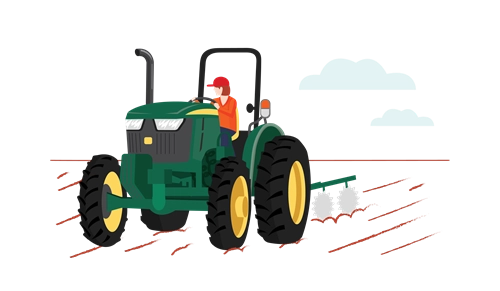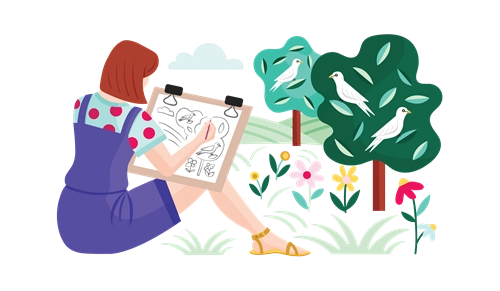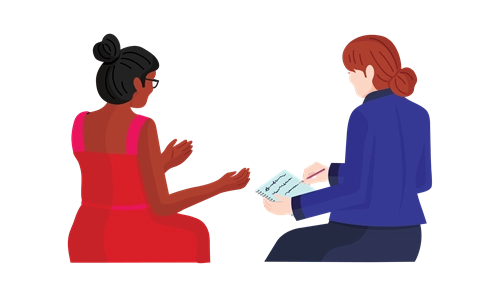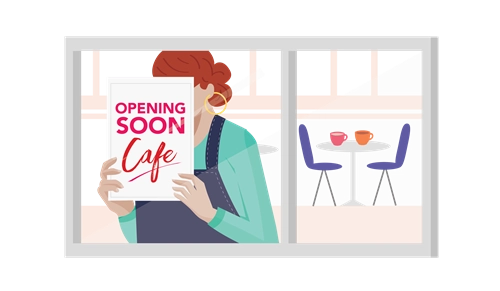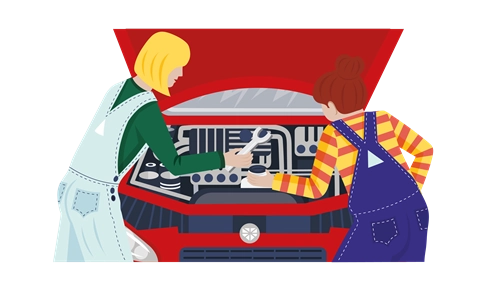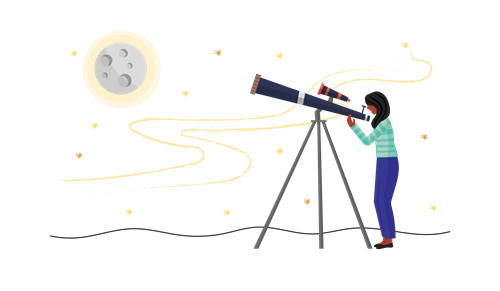-
Curriculum alignment
Science
AC9S7H04/AC9S8H04 – explore the role of science communication in informing individual viewpoints and community policies and regulations.
AC9S7I08/AC9S8I08 – write and create texts to communicate ideas, findings and arguments for specific purposes and audiences, including selection of appropriate language and text features, using digital tools as appropriate.
- S
- T
- E
- M
TikTok science stories
Years 7 and 8
Learning hook
As a class, watch this short video (2:30) where proud Wiradjuri woman and astrophysicist Kirsten Banks explains her role as a science communicator.
Kirsten Banks - Astrophysics, TikTok and Culture
Explain to students that Kirsten is an active communicator on a range of platforms. Students can find out more about Kirsten and explore her blogs, podcast and other media on her website.
Now show students one of Kirsten’s TikTok videos. Her content includes videos that align with Earth and space sciences and Physical sciences content at this level. A great starting place is this video about forces on a balloon.
As class, discuss who the audience for Kirsten’s videos could be, and what features of the video support that idea. What features of the text show how Kirsten connects with her audience?
Students can also read about Kirsten’s approach to communicating ideas on TikTok here.
Girls in focus
Research has shown that when girls are exposed to positive STEM role models who look like them, their interest increases along with an improved self-concept relating to STEM fields (Hughes, Nzekwe and Molyneaux, 2013). There are increasing numbers of scientists turning to TikTok to share their love of science with a broader audience, so encourage students to share scientists they identify with on the platform.
Learning input
Science communication is the practice of informing, educating, raising awareness of science-related topics and engaging the public’s interest and enthusiasm for science. Science communicators can transform scientific information into accessible, understandable forms so all members of the public can develop scientific understandings of the world. Science communicators often play an important role in informing individuals and shaping community decisions.
Students can learn more about scientific communication and view some inspiring examples in this article from Shorthand.
Girls in focus
Research has found that just altering a job title to sound like it demands more ingenuity or creativity can boost the number of female applicants. Girls may not realise the creative opportunities or the potential to make a difference of a career in science communication.
Learning construction
Part A - explore ideas about the role of science communicators
-
Watch the video ‘Are vaccines safe?’
-
Consider how the purpose and audience for this video differ from the purpose and audience of Kirsten’s TikTok videos. Develop the idea that science communication needs a clear purpose and audience to be effective.
-
As a class, identify a range of purposes and examples of science communication. A shared class concept map might be one way to collate ideas.
-
As a way of broadening the activity, challenge students to find their own example of science communication to share with the class.
Girls in focus
Girls are often motivated by activities that make the world a better place and enable them to connect to their communities. This article provides insight into then Director of Communications, Kylie Walker’s process in coordinating the Australian Academy of Science’s campaign to educate the public about immunisation.
Read the articlePart B – challenge students create their own TikTok-style science communication videos
Note that students should not be encouraged to use the TikTok app but should create and house their video safely using school-approved apps and digital tools.
TikTok videos can be up to 3 minutes long, but your students could be encouraged to complete a 60 second video, like those on Kirsten’s channel.
- Students can select a science topic that relates to a current area of study, interest or a personal passion.
- Before they begin creating their video, students should plan their content and how they are going to ensure effective and engaging communication. Students can use the template (see below).
- Students should be encouraged to share their videos and seek feedback from others as part of their review process.
Girls in focus
Girls are motivated when they are given opportunities to approach projects their own way, so they are exercising their personal preferences and creativity. Emphasise the value of creating a unique video that expresses each student’s personality and style.
-
Rubric
Assessment
Criteria
Beginning
Achieved
Advanced
Science concepts
Science concepts are linked to the phenomena.
Science concepts capture some aspects of the phenomena and consider a peer audience.
Science concepts capture key aspects of the phenomena, are accurate and communicated in a way that would engage a peer audience.
Props and effects
Props and/or effects are used for engagement.
Props and/or effects are used engagingly to illustrate a science concept.
Props and/or effects are used creatively to illustrate a science concept for a peer audience.
Communication
The explanation is audible and uses language appropriate to the audience.
The explanation is clear, audible and uses language appropriate to the topic and audience.
The explanation is clear, audible and engaging. Language use is accurate and appropriate to the topic and audience.


